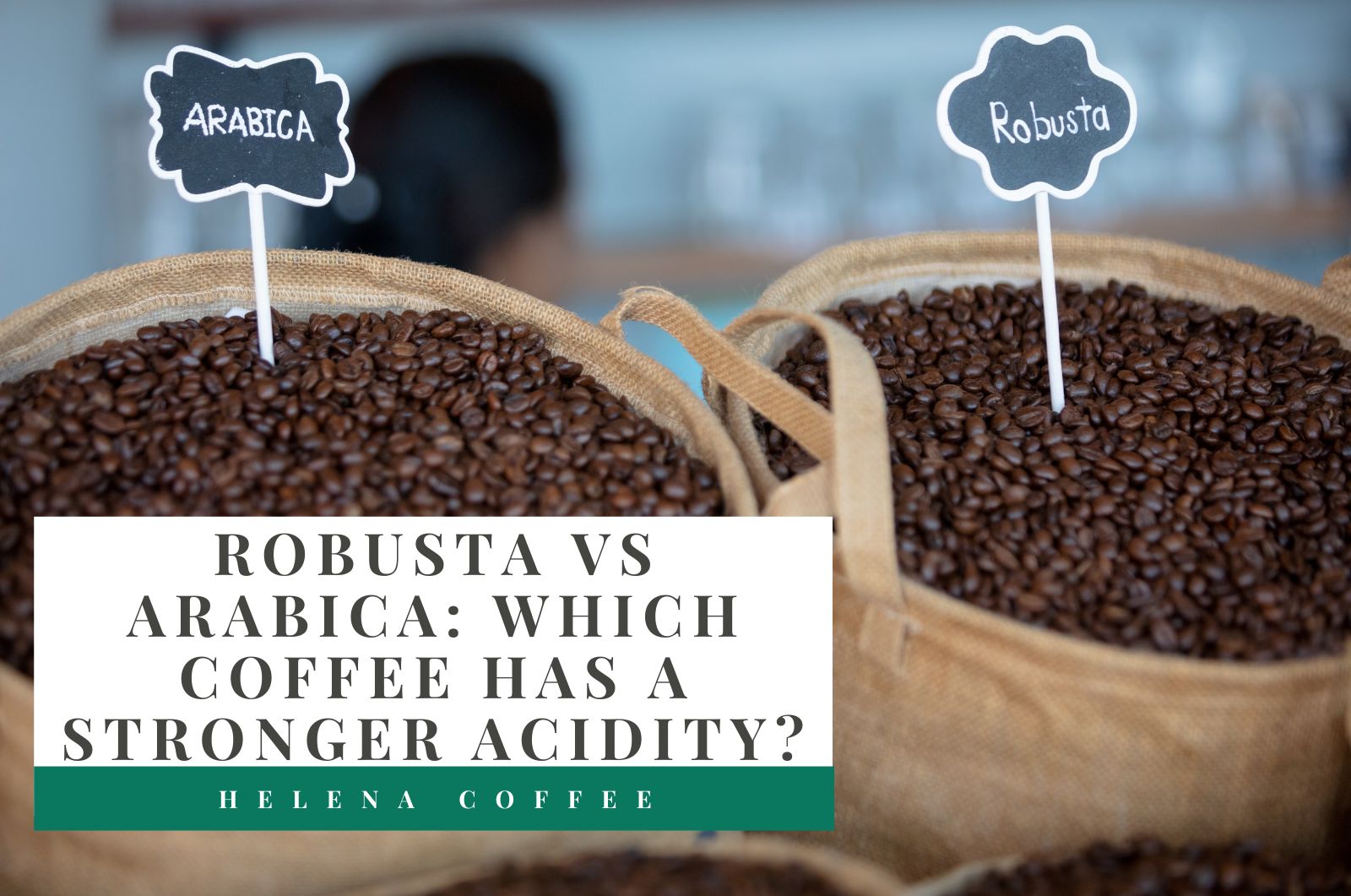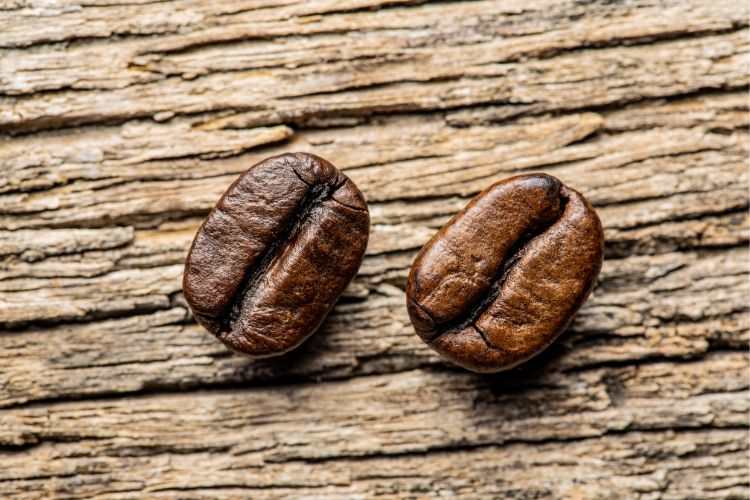
Robusta VS Arabica: Which Coffee Has A Stronger Acidity? – There are approximately 100 different coffee species worldwide, and when a coffee enthusiast learns that there are different coffee beans, a whole new world of coffee appreciation opens up.
Robusta VS Arabica are the two most well-known brands of commercial coffee. Although the beans may appear to be fairly similar, they actually differ greatly from one another in many ways.
The acidity of Arabica, which is more acidic than Robusta, adds richness to the flavor and aroma of coffee. Arabica’s delicious, vibrant aromas stimulate the palate and help you get through the morning.
Although the word “acidity” has some bad connotations, it is what gives coffee its wine-like characteristics, especially when combined with the frequent berry overtones found in Arabica blends.
The goal of this essay is to clarify further distinctions between Robusta VS Arabica coffee and determine which is superior.
What Sets The Robusta VS Arabica Coffee Beans Apart?
Although after roasting, most beans have a similar appearance, there are many differences amongst them. Let’s examine their distinctions as Arabica and Robusta are the two main coffee species used in coffee shops:
Taste – Robusta VS Arabica
Robusta beans have overtones of grains and a strong, almost peanut-like aftertaste, while Arabica beans have a more delicate, aromatic flavor.
Sugar level
Almost twice as much caffeine is present in Robusta than in Arabica. Every 6-ounce cup of robusta has about 200 mg of caffeine. Robusta is a great option if you value energy over flavor.
Acetitude
Due to the absence of citric and phosphoric acid in Robusta, Arabica is more acidic than Robusta. Arabica’s sweet, fruity flavor is a result of acidity. The absence of acidity in Robusta is beneficial if you have acid reflux.

Chlorogensac
Without adding to the naturally sweet flavor of coffee, CGAs make up a portion of the acidity in coffee beans Arabica. Because CGA is not heat-resistant like other acids, they have less of an impact on the coffee’s flavor during roasting.
Arabica beans are more susceptible to insects because they have lower levels of CGA, which is a natural insect repellant.
High levels of CGA contribute to the robustness of robusta beans. CGA’s bitter taste keeps insects away. The Robusta bean’s increased bitterness is explained by this.
Use
Beyond just the beverage, there are various methods to make coffee, including incorporating it in dishes. Whole beans dipped in chocolate are sometimes consumed as a snack. Coffee beans can also be used to make face masks and body washes.
Since the 1960s in America, Arabica beans have been the most widely used coffee species for making coffee beverages. The majority of coffee products today are made from Arabica beans.
Before customers learned more about the Arabica bean, Robusta beans were common and utilized in inexpensive coffee mixes. Very few businesses just use Robusta beans in their coffee.
Cost -Robusta VS Arabica
Popularity is the main determinant of coffee pricing, but there are other aspects as well. The origins and growth circumstances of the coffee also impact its worth.
Due to its increased demand, Arabica beans are the more expensive bean. Arabica is expensive to produce because its growing circumstances aren’t the easiest.
Because they are not widely used, robusta beans are inexpensive. They don’t have as good of a flavor as
Arabica beans are more difficult and expensive to cultivate than Robusta beans.

Cultivation – Robusta VS Arabica
Any crop’s production depends heavily on its agricultural practices. Coffee beans are actually seeds that are taken from fruit pits that grow on the stalks of coffee plants, not actual beans. They flourish in warm regions with moderate to high humidity levels.
Arabica beans are challenging to grow. First, it needs seven years to reach full maturity. Arabica beans must be grown at 1,500 m or higher in elevation to get the highest grade beans.
Additionally, the plant needs constant rainfall and temperatures in the mid-fifties. Small white flowers and red berries are produced by Arabica, and the coffee beans develop in the middle of the fruit.
The Robusta plant produces larger crops and is simpler to grow. Unlike the Arabica plant, it doesn’t require special growth conditions.
They can grow at any height as long as the temperatures are not too chilly and are resistant to pests and illnesses. It can withstand some cold and tolerates drought.
Developing areas
Ethiopia was the original home of Arabica beans. They do now, however, develop in several nations. With five billion Arabica plants produced annually, or half of all plants worldwide, Brazil is the world’s largest producer of Arabica beans.
They also flourish in Latin American nations including Jamaica’s Blue Mountains, Mexico, Panama, and Guatemala.
Because there is little demand for them, Robusta beans are grown in fewer places. Robusta coffee, which also grows in some regions of India and Africa, is most commonly produced in Vietnam.
Sugar and lipids
Coffee’s flavor is enhanced by lipids and sugars, so the higher the lipid and sugar content, the more delicious the coffee.
Lipids, which are substances primarily found in lipids, give the coffee a creamier mouthfeel. The sugar content of the bean will also enhance the coffee’s flavor and aroma.
Arabica beans naturally have a pleasant taste because they are rich in sugars and fats.
Robusta has a slightly harsh taste due to its high caffeine level and lower fat and sugar content than Arabica. However, Robusta has a high lipid content and, when used to prepare espresso, can result in a lovely crema.
Which coffee is preferable, Robusta VS Arabica?
Arabica beans are regarded to have a better flavor even if they have less caffeine than Robusta. Arabica offers a smoother, sweeter flavor with hints of chocolate and sweetness.
It also has berry and fruit undertones. Robusta, on the other hand, has a sharper, more bitter flavor with undertones of grain.
Arabica farmers produce more than 60% of the coffee consumed worldwide. Although the Arabica plant needs particular growing conditions, it yields great coffee with a wonderful aroma.
However, not all Arabica is of good quality; some of it is quite commonplace. Without certain requirements being satisfied, the plant won’t function well. There are several low-quality Arabicas available on the market every year just for this reason.
Regrettably, Robusta receives a lot of bad press in the coffee industry. Robusta is inexpensive and only available in commercial grade for use in instant coffee since it can grow anywhere and produces a large harvest.
But some Robusta coffee is really good. Robusta has higher chlorogenic acid, which offers coffee several health benefits, and contains twice as much caffeine as Arabica.

In India and Vietnam, there are several great Robusta growers who focus on producing top-notch Robusta coffee. This Robusta has a bold, lively flavor and is of good quality as opposed to being a cheap commercial-grade coffee.
It’s possible that many coffee drinkers are unaware that many Arabica mixes contain Robusta. If milk and sugar are added, pure Arabica may become tasteless.
In a blend, Robusta balances out Arabica’s superb flavor by adding more caffeine and a stronger coffee flavor. Arabica coffee benefits from and is spiced up by Robusta.
A blend of 30% Robusta to 70% Arabica is a delightful combination, as pure Robusta wouldn’t be particularly good to drink on its own.
Given that Arabica has more lipids and carbohydrates than Robusta, it may seem strange that Robusta provides espresso a richer crema.
Robusta can sometimes outperform Arabica; for instance, it works better in iced coffee drinks.
More sweetness and less acidity are produced by cold brewing than by hot brewing because it extracts taste and nutrients differently.
A cold brew makes it simpler to differentiate the tastes of Robusta. Robusta imparts a flavorful peanut or toffee finish to these beverages.
Robusta has a position in the coffee industry, even if Arabica may be the superior coffee in terms of flavor and aroma.
Robusta is the way to choose if you want energy in the morning because it gives a blend more caffeine and vigor. It’s crucial to study the bag’s label and search for a high-quality Arabica/Robusta. 100% Arabica is not always indicative of high-quality coffee.

Final reflections
In coffee, acidity is a good thing since it brings out the flavor’s richness and aroma. In the past 20 years, the phrase “100% Arabica coffee” has come to mean exceptional coffee.
Given the challenge in producing the plant and its excellent flavor, this reputation is understandable.
Although Robusta is frequently regarded as the lower-quality of the two, it is nevertheless a useful coffee to keep on hand.
It also has other purposes; it’s widely used to make instant coffee, decaffeinated coffee, and iced coffees. It brings out the greatest attributes of pure Arabica.
Many people would be dissatisfied with their morning java if it were made only of Arabica, and Robusta doesn’t deserve its bad image.
Similar to how not all Arabica coffee is of high quality and not all Robusta coffee is subpar. In light of this, compare prices and read the coffee labels before making a decision regarding one coffee bean over another.